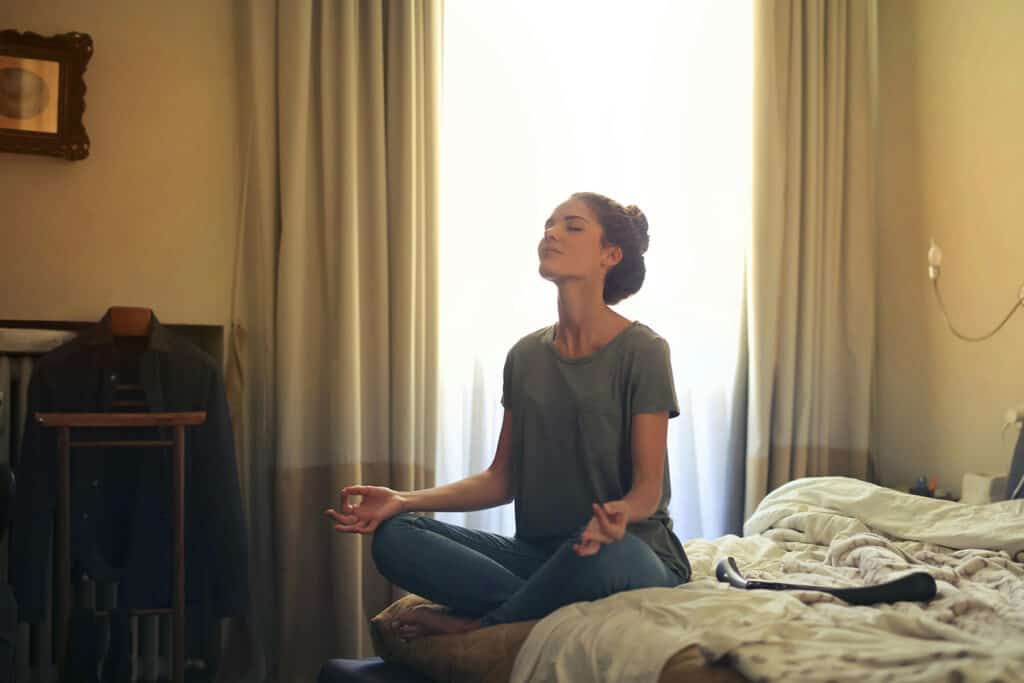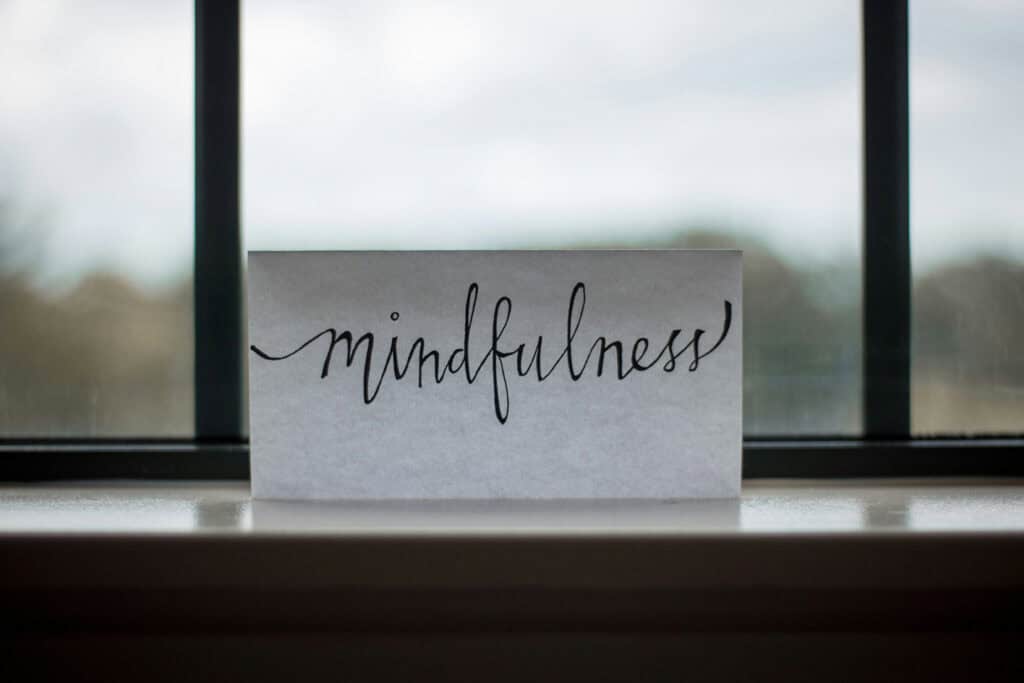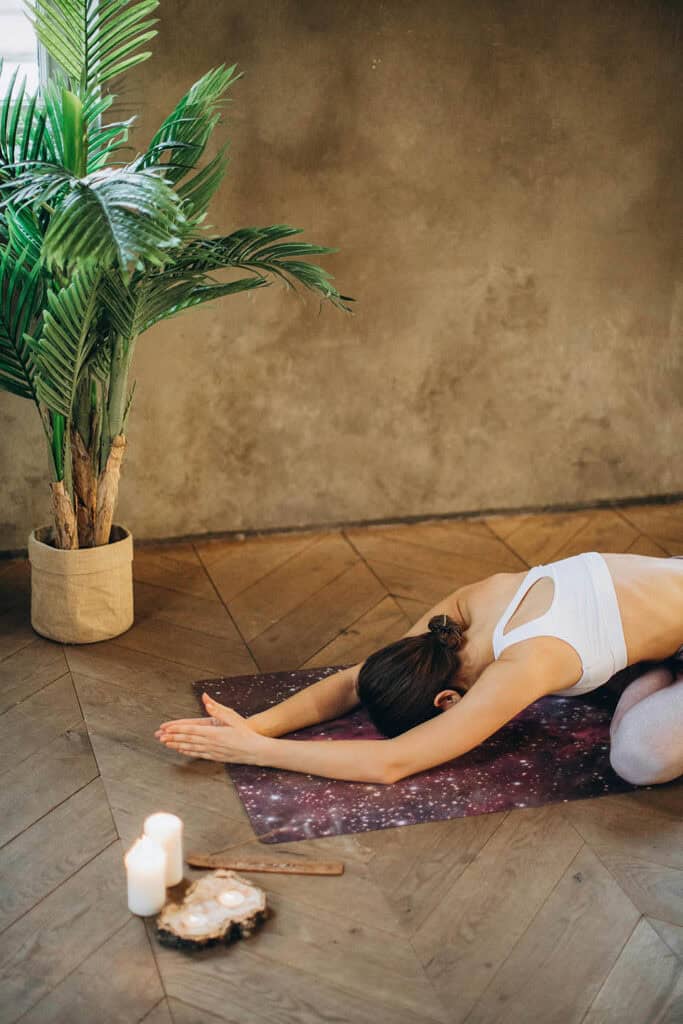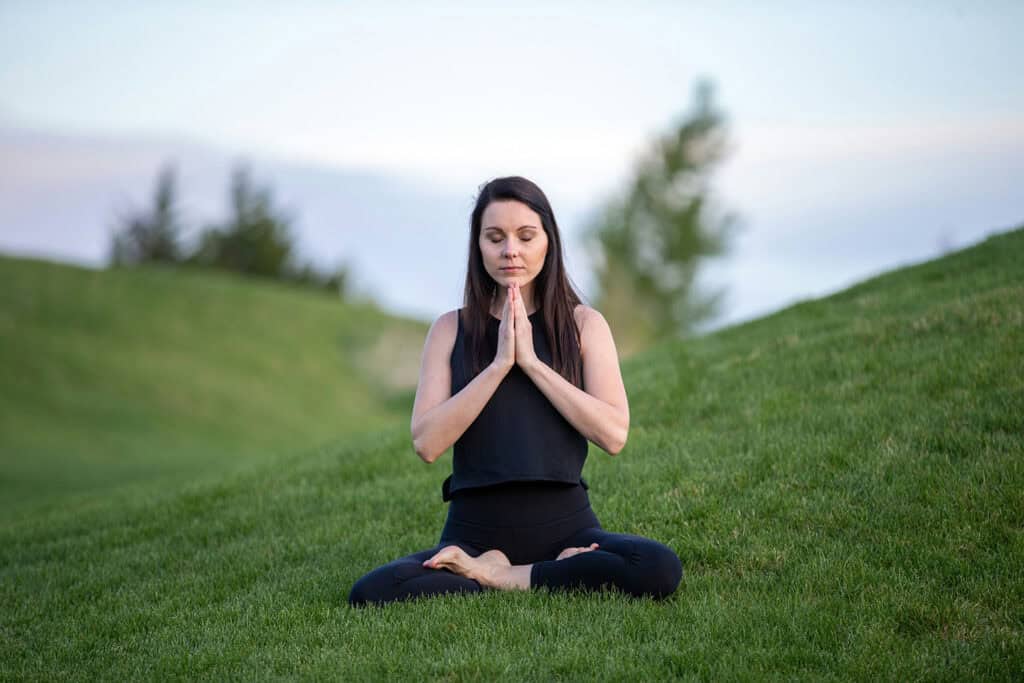Want to start meditating but find it hard to sit still or stay focused?
You’re not alone—and the solution might be as simple as lying down. Meditating in bed is one of the most beginner-friendly ways to ease into mindfulness. It removes the pressure of perfect posture and lets you unwind in a setting that’s already associated with rest and comfort.
In this article, we’ll walk you through 10 practical techniques to help you meditate in bed, from deep breathing and body scans to gratitude reflection and calming music.
After reading this article, you’ll feel ready to create a relaxing bedtime routine that nourishes both your body and your mind.
- Why Meditate in Bed Is Ideal for Beginners
- Best Time to Meditate in Bed for Beginners
- How to Prepare to Meditate in Bed
- Steps to Meditate in Bed for Beginners
- 1. Set an Intention
- 2. Start With Deep Breathing
- 3. Body Scan Relaxation
- 4. Use a Guided Meditation App
- 5. Try Visualization Techniques
- 6. Focus on a Mantra or Word
- 7. Practice Gratitude Reflection
- 8. Listen to Calming Music or Nature Sounds
- 9. Use Progressive Muscle Relaxation
- 10. Stay Aware, Not Asleep (at First)
- Common Challenges in Bed Meditation for Beginners
- How to Meditate in Bed for Beginners: A Recap

Why Meditate in Bed Is Ideal for Beginners
Practicing deep meditation in bed is a gentle introduction to mindfulness meditation. It removes the pressure of perfect posture or unfamiliar techniques and helps you relax in a familiar, safe space. Beginners may find it less intimidating than traditional seated meditation practice.
- Comfortable setting: Being in bed helps your body associate meditation with calm.
- No special equipment: No mats, cushions, or timers needed.
- Sleep benefits: Helps reduce racing thoughts before sleep.
- Eases anxiety: Great for decompressing after a busy day.
- Reduces resistance: You’re more likely to stick with a routine that feels effortless.
See also What to Wear for Meditation
Best Time to Meditate in Bed for Beginners
The most effective time to meditate in bed is usually right before sleeping or immediately upon waking. These times promote a present moment mindset and support a smoother transition into or out of sleep.
- Before bed: Clears mental clutter, supports restful sleep.
- Morning: Sets a calm, focused tone for the day ahead.
- Middle of the night: Helpful if you wake up anxious or can’t fall back asleep.
- Nap time: A quick sleep meditation can promote a restorative nap.
How to Prepare to Meditate in Bed

Setting the right conditions enhances the experience of meditating in bed. Since comfort is key, your physical and mental environment should support mindfulness practice and relaxation.
- Dim the lights or use soft lighting.
- Silence notifications to prevent disruptions.
- Lie in a neutral position—typically on your back.
- Adjust pillows so your spine feels supported.
- Keep the room cool for comfort.
- Use calming scents like lavender oil to enhance the mood.
Steps to Meditate in Bed for Beginners
Each of these steps introduces you to different techniques and encourages deeper awareness and relaxation.
1. Set an Intention

Before you begin, mentally affirm your reason for meditating in bed—whether it’s to reduce stress, sleep better, or clear your mind. An intention provides direction and focus for your meditation practice, helping anchor your attention when it wanders.
- Examples: “I want to rest fully,” or “I’m letting go of today.”
- Extra: Journaling intentions can support self-discovery.
- Tip: Reaffirm your intention nightly to create consistency.
2. Start With Deep Breathing

Begin your meditation by taking slow, deep breaths. Inhale through your nose for 4 seconds, hold for 4, exhale through your mouth for 4. This helps calm the nervous system, oxygenate the body, and create a sense of calm presence.
- Technique: Try the 4-7-8 breathing method to calm the nervous system.
- Tip: Focus on the sensations of each breath to stay present.
- Extra: This technique is great when your mind wanders or feels scattered.
3. Body Scan Relaxation

A body scan is a classic technique in bed meditation. Move your attention from the top of your head down to your toes, noticing tension and releasing it. This encourages total body relaxation and heightens your awareness of physical sensations.
- How: Spend 5–10 seconds noticing and relaxing each area.
- Extra: Include visualization by imagining warmth or light traveling through your body.
- Tip: Great for calming the wandering mind and promoting restorative sleep.
4. Use a Guided Meditation App

Apps like Calm, Headspace, or Insight Timer offer guided meditations designed specifically for bedtime. These walk you through breathing, visualization, or affirmations, making it easier to stay focused and engaged.
- Benefits: Help beginners follow a structured meditation practice.
- Examples: Try sleep meditation tracks on Calm, Insight Timer, or Headspace.
- Extra: Many sessions are tailored for falling asleep and enhancing sleep quality.
See also Meditation for Focus and Energy
5. Try Visualization Techniques

Imagine a calming scene like a quiet beach, forest, or starlit sky. Visualization diverts attention from stress and builds a mental sanctuary you can return to anytime.
- Scene Ideas: Quiet forest, gentle ocean waves, or starry sky.
- Extra: This technique enhances mindfulness meditation through imagination.
- Tip: Visualize success on your daily life goals for added motivation.
6. Focus on a Mantra or Word
Repeat a calming word or phrase like “peace,” “relax,” or “I am safe.” Focus your attention on the sound and rhythm of the word to stay present. Mantras help create a soothing mental rhythm and reduce intrusive thoughts.
- Examples: “Peace,” “Still,” or “I am safe.”
- Extra: Combine mantra repetition with breathing or guided meditation.
- Tip: Repeat your chosen word until your mind wanders less.
7. Practice Gratitude Reflection

Spend a few moments thinking of three things you’re grateful for that day. Gratitude boosts mental well-being and rewires your brain to focus on positive aspects of your life.
- Why it matters: Supports emotional balance and improves overall meditation practice.
- Examples: Gratitude for comfort, people, or your bed tonight.
- Tip: Pair this step with deep breathing to deepen your mindfulness practice.
8. Listen to Calming Music or Nature Sounds

Soft instrumental music or gentle rain sounds can enhance your ability to relax and concentrate during meditation in bed. These sounds serve as a backdrop to help ease your nervous system.
- Tracks to try: Waterfalls, white noise, flute melodies.
- Extra: Natural sounds can improve sleep quality during meditating in bed.
- Tip: Set a sleep timer to turn off sound automatically.
9. Use Progressive Muscle Relaxation

Tense and release individual muscle groups, starting from your feet and working upward. This technique helps discharge physical stress and signals the body to rest.
- Sequence: Start at the feet and move up to your neck.
- Extra: Helps release physical tension built up during a busy day.
- Tip: Match breathing to each movement for better restorative sleep.
10. Stay Aware, Not Asleep (at First)

It’s okay if you drift off—but as a beginner, try staying awake for at least a few minutes of active meditation in bed. This improves focus and helps build long-term mindfulness habits.
- Why: Builds mindfulness and reinforces your meditation improves mindset.
- Tip: Use shorter sessions when beginning to help with focus.
- Extra: If you fall asleep, it’s okay—your mind still benefits from the calm.
Common Challenges in Bed Meditation for Beginners

Struggling with a wandering mind, physical discomfort, or impatience is common.
- Advice: Return to the breath or your mantra each time your attention drifts.
- Reassurance: Every session helps—even if it feels imperfect.
- Support: Keep a nightly journal for self-reflection and progress.
See also How to Feel Lighter Physically
How to Meditate in Bed for Beginners: A Recap
To enjoy meditating in bed, you don’t need to be perfect—just consistent. This gentle habit can create lasting improvements in your sleep quality, stress levels, and overall wellness.
Whether you’re practicing mindfulness meditation, trying progressive muscle relaxation, or listening to guided meditation, each approach helps promote a peaceful mind and better rest. By incorporating these habits into your daily life, you can train your brain to embrace calm and presence—one breath at a time.
No matter how your mind wanders or your body feels, the bed can be your space for reflection, healing, and rest. Embrace your meditation practice, and watch how it transforms your nights—and your days.


